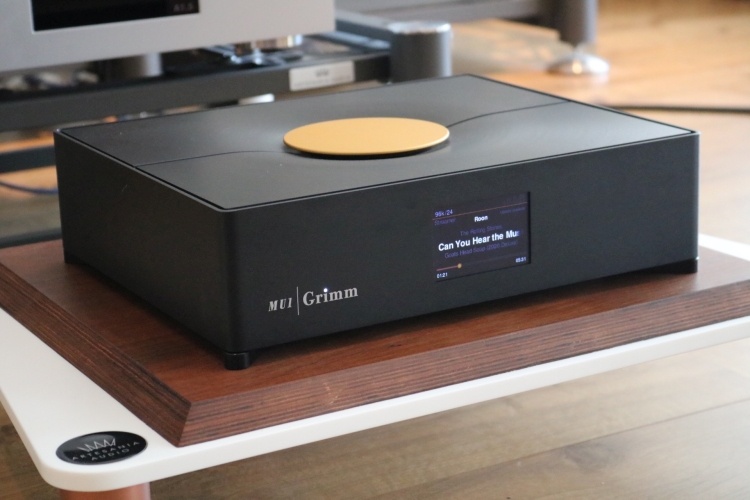
Operation
The MU1’s most distinctive visual aspect is its large, gold-colored wheel on top which works in conjunction with the display on the front panel. Thankfully, the display is of the TFT sort and not OLED. Yes, the latter can have deeper colors and higher contrast, but I know that these displays burn in very quickly from experience. That’s actually why I leave the displays on my CH Precision equipment mostly off. With the MU1, however, there will never be any burn-in or other degradation and one can safely leave the display always switched on.

While I love having a display and it shows an abundance of info, I noticed that the progress bar only remains in sync as long as you don’t manipulate the position within a track remotely.
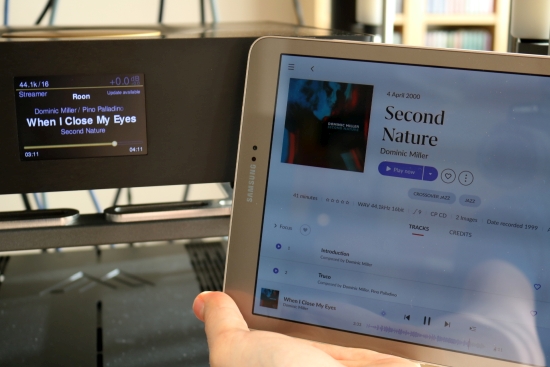
As can be seen in the above photo, the two progress bars remain in sync so long as you don’t scroll within a track. If you do, the bar on the MU1 display will keep showing the old position as can be seen in the photo below. This resets when the next track starts to play and the two are in sync again.
Eelco Grimm of Grimm Audio responded (translated and paraphrased):
The problem with progress bar synchronicity has been identified and is fixed. It was introduced along with a Roon update that changed certain aspects of an extension that we use. The fix will be issued as part of the next user-installable software update. Along with this update, we will also add IR remote functionality to allow control of input selection and play/pause. Later this year, we will make the MU1 an official Roon endpoint which will negate the need for the extension and allow easier communication. Prev/Next functionality is on the wishlist.
(edit 11-09-2021: the new software is now released, v1.3.0, which enables remote control of play/pause, previous, and next).
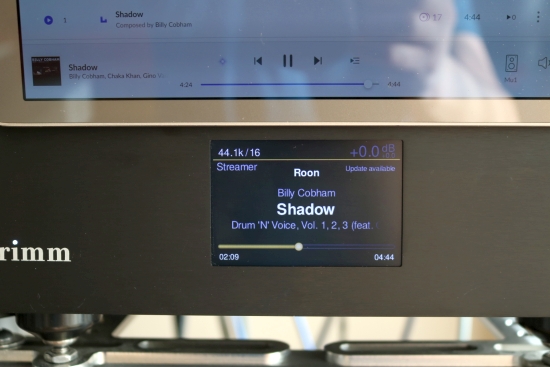
Another small annoyance is with the gold wheel because there the software makes a distinction between a short and a long press.
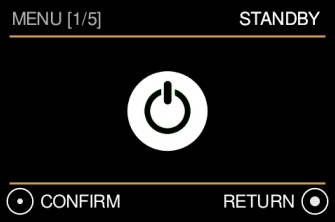
Much like the Linn CD12 that could be made to either skip to the next track or open its drawer depending on how long you pressed on it, which resulted in many inadvertent drawer openings, I have inadvertently switched off the MU1 many times when I actually wanted to return to the main screen. But at a certain point, you get the hang of it. And that’s when you realize that the rest of the implementation has actually been done cleverly.
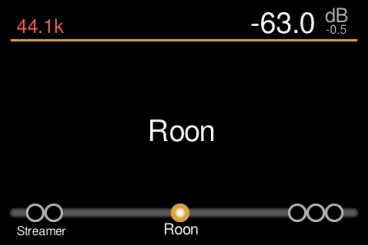
By turning the main knob while holding it down the different sources are selected. If you ‘hover’ over a certain input for more than 1 second, it will be selected in preview mode which means that you can listen to the selected source at 10dB lower volume than the current setting to check if is what you like to listen to. When releasing the wheel the selected input is confirmed and the volume returns to the normal setting.
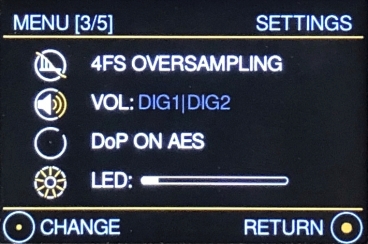
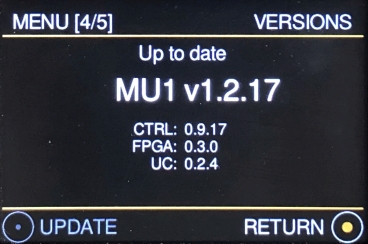
Menu page 3 allows the selection of 0, 2, or 4x Oversampling, the enabling or disabling of volume control, the format to use when outputting DSD data and the brightness of the front panel LED. Alas, even at its lowest, the LED is still quite a bit brighter than I would like. The fourth menu page shows the versions of the various internal components.
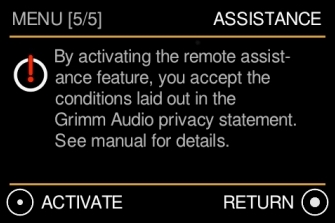
The final menu page is to enable the assistance/support mode. It should only be activated when you have reported a problem with your MU1 and Grimm Audio support asked you to enter the unit into Assistance Mode. In this mode, a Grimm Audio engineer can get remote access to your device to help solve the problem.
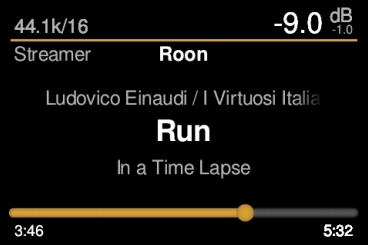
The main display shows all the essential information such as Sample Rate and File Format, the currently set Volume in dB, the Mismatch volume in dB (for instance, as a result of normalization), Streamer Service, Artist, Song Title, Album name, Progress Bar, Track progress time, and Track length.
In the normal playback mode, the wheel on top functions as a huge play/pause button. I find that I actually use this function very frequently, because I swap sources a lot and because I like being able to control the music playback without always having to use the iPad.
Of course, because it’s Roon, you can comfortably control the listening volume from the tablet or phone that you are controlling the unit with. With a fader on a screen, there’s always the danger of accidentally sliding it all the way over. To help mitigate this, you can set a hard limit within the Roon software. The Grimm team has taken this one step further by implementing a more intelligent safety limit on the volume control. Whenever you turn the MU1 volume control wheel or the Roon app volume fader quickly to the maximum position, the volume will jump back to the lowest level to protect from accidental operation.
The MU1 combines seamlessly with the LS1 playback system. But, of course, the virtues of the MU1 can also be realized with DACs from other manufacturers and it’s the latter that I will write about in this review.
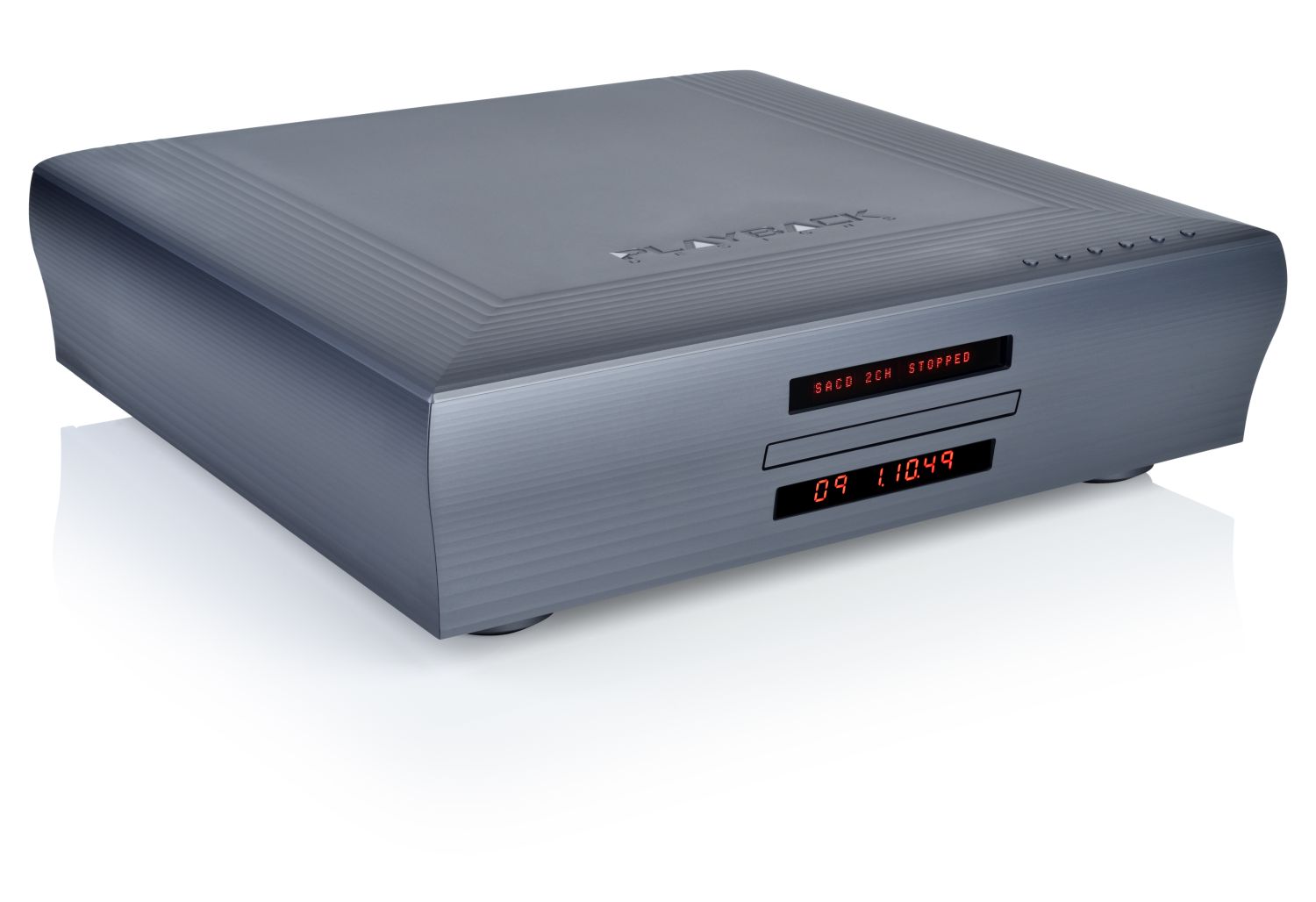







Hi Christiaan,
interesting review! Especially the comparison with the Aqua LinQ, which I own as well. Knowing the LinQ really well, it would be interesting to read how it compares with the latest and best implementation of the NAA + CORE module, allowing it to the the embedded HQPlayer on its own. If you have the chance, definitely ask for this upgrade – in my ears that’s a different level.
Best Robert
Hi Robert, as we speak, I am reviewing the Core+NAA module. And indeed, it is a very noticeable step up!
Hi Christiaan,
nice! Looking forward to your impressions. In my system, the
LinQ is connected via I2S to the La Scala MKII Optologic DAC – my perfect match with a sound signature more on the emotional/warmer side.
Best Robert
Hello Christiaan, thanks for another excellent review.
Any change of you reviewen the streamers from Hifi Rose?
regards Albert van Bentem
Hi Albert, I have no plans for that, but I will add the brand to the list of items that might deserve a review.
Hi Christian,
It was your review that takes away the last hordes and decide me to buy the Antipodes K50.
All my flacs on the internal SSD’s and only the ethernet connection for Roon updates and remote control. I use Squeezelite as player. The differences you describe with the K50 versus MU1 is what I do hear with the AES/EBU versus the I2S (HDMI) outputs.
I do use the fantastic Denafrips Terminator Plus which can do up/over sampling but I prefer the “rawer” NOS mode.
And there is something I do not like with this Grimm MU1; Updates (hard- and software) that can’t be implemented on the older units. The people that did buy these new and unknown server, paved the path for the upcoming innovations and should be “rewarded” for buying the first units.
Hello Christian,
I am in the market for a new Roon core server and have read your excellent reviews with interest. I currently use a SGC I7. But I have just auditioned a K50 for about a month.
I have ordered a Tambaqui Dac to replace my Bricasti and wondered if the Grimm might be a better match. However, I use convolution filters in Roon DSP and wonder if the I3 in the Grimm is underpowered?
Hi Jeff, the Tambaqui sure is a nice DAC, so long as it is used with an analog preamp. The MU1 and the K50 are both great but they have very different sonic presentations and which one is the better match will be a matter of personal preference and perhaps system synergy. FWIW, the MU1 in its current incarnation sounds clean, fast and very transparent and I would describe the Tambaqui similarly, albeit with a touch of gentle smoothness. The K50, on the other hand, has a full, smooth, and relaxed sound. Do you want to maximize transparency, articulation, resolution, and neutrality? Then the Grimm might be ideal. Do you want to pull the sound more toward fullnes, deeper tonal saturation, and liquidity, then the K50 could be more ideal. Regarding the processing power, I’m afraid I can’t provide a definitive answer as I do not currently use convolution filters. However, I have used these in the distant past with a much older and simpler machine and do not recall any slowing down or snappiness with the UI or the music playback.
Hi Christiaan, what is your impression of the latest Roon (2.0)/ firmware (1.5) updates?
Hi Vincent, Roon SQ is always going up and down, or sideways, depending on your view. And as it turns out, the MU1 is also sensitive to these changes in Roon SQ. For me, 2.0 sounds smoother and more polite than 1.8 (which some will like) but also less forceful and incisive (which I do not like). But I have been hearing small improvements with the latest crop of Roon updates. It’s not back to how 1.8 was at its peak, but it’s better than it was with the first incarnation of 2.0.
For me, the latest Grimm update (1.5) has barely had an impact on the sound quality from the last version (1.4). I thought I did hear ever so slightly duller treble but it’s important to note that the simple act of restarting can also subtly affect the sound, at least for a short period of time. In my successive day-to-day listening, the MU feels the same as it did with 1.4. If there really is a delta then it’s too small to reliably detect or describe. I was also happy to find that switching on/off the second output seems to be transparent.
For me, the last Roon update was a good one: detail retrieval got beter, and separation of instruments improved. There is no way to travel in history and go back to 1.8 I guess..
Thanks for sharing your impressions!
Hi Christiaan
Hope you are doing well. Love your site, reviews, methodology and style.
Have you had the chance to hear the Rockna wavedream net server, and if so how would it compare to the Grimm MU1 ?
Cheers
David
Alas, I have not heard any Rockna equipment yet.
Hi Christiaan, though this is not the right thread for my question: but why did you never put the Taiko Extreme to the test? And what about the newly introduced Audiophool Music Server 2.1?
Hi Vincent, I work for Taiko Audio. As such, there would be a conflict of interest:-) I have not heard the AudioPhool nor have I been approached by them.
I see, thats a really shame since I had them both in and compared last week. I was really curious about your findings. Since the TE is considered to be the ultimate reference streamer, it makes other comparisons somehow less relevant. But I get your point regarding CoI.
My main takeaway: the Taiko Extreme SGM has crazy resolution and black background combined with larger than life soundstage. The first guitar plucks in Private Investigations – Dire Straits sounded like real metal strings where the MU1 like plastics. Though better in nearly every aspect, the MU1 on the other hand offers a more relaxed presentation and more forgiving with less ‘audiophile’ mastered tracks. For example Michael Jackson – Thriller was a better performance on the MU1.
The TE performance reminded me of the moment using a TDK SA-X cassette tape for the first time on My first Sony walkman 🙂
Hi Christiaan,
I love your reviews and think that you write the best reviews for digital gear.
I was ready to buy MU1 but am backing off after the May 5, 2024 update. I thought that Grimm eliminated all other influences on SQ by their processing and reclocking of outputs. It does not seem to be happening based on your May update.
Are you using Roon only for the music library management and to pass unmodified data to the Grimm board, that is, without any processing or over sampling by Roon?
Any comments are welcome.
Regards,
Tony
Hi Tony, thanks for the nice feedback. It’s a tricky field. Purely theoretically, certain deviations are accounted for in margings, but large deviations should not occur. However, as I find with any gear, even digital gear, there are always influences, and circumstances matter. Depending on who you ask, my observations are spot-on, exaggerated, or not even possible. I have two friends with MU1s and one of them agrees with my findings while the other does not notice any differences. At the end of the day, all I can do is relay what I hear. But importantly, even though it changed since I first reviewed it, the MU1 is still my favorite Roon server.
Roon’s DSP functionality is superb and can come in handy when your room is not ideal and remodeling or treatment is out of the question. Using Roon DSP, I made my then non-SAM Genelec speakers sound really good even though they were in a narrow kitchen area. For my main system, however, I prefer not to use DSP or any Roon plugins, as they have an audible impact. Then again, if the room has severe issues, the net result with DSP can still be much better than without it.
When using the MU1 with its AES/EBU output, I have the Grimm’s oversampling set to none. But currently, the MU1 sounds best to me when streaming to the CH Precision’s C1.2 RoonReady Ethernet input. Even in this capacity, the MU1 has a large advantage over running Roon Core on a standard PC.
Hi Christiaan,
Thank you for your reviews. I became a CH 1.2 DAC owner in part due to your recommendations.
I am trying to figure out the next steps regarding the streaming/music server and I was considering Grimm MU1 given that it is natively optimized for the AES output and I don’t have a USB board on the CH DAC. Currently I am using a Lumin U2 network transport.
Are there any other music servers that you would recommend over the Grimm? I see that XACT S1 is listed at the top of your award list at the moment but it only supports USB output. Would you recommend getting that unit and purchasing the USB board for my DAC?
Thanks,
Michael
Hi Michael, As I always say, the “best” server depends on your musical taste, and on system synergy. That said, I do indeed have my own preferences. The Grimm MU1 is a great server and one of the best Roon Servers at its price point. AES/EBU is a consideration as it provides generally a more consistent sound quality, although USB can also sound very good. I’m currently leaning to USB with the C1.2 again, using the Antipodes Oladra running MinimServer with MPD. If you can live without Roon and don’t mind using USB, I find the XACT S1 the best server at its price point, and quite a bit beyond. The XACT S1 and Oladra sound a little different but there are not miles between them. The huge upside of the Oladra, of course, is its ability to run multiple platforms while offering all the relevant digital outputs. Finally, to be honest, I recommend (also) getting the USB board so that you have the freedom to choose, as the success of any digital interface depends on the marriage with the server or streamer.